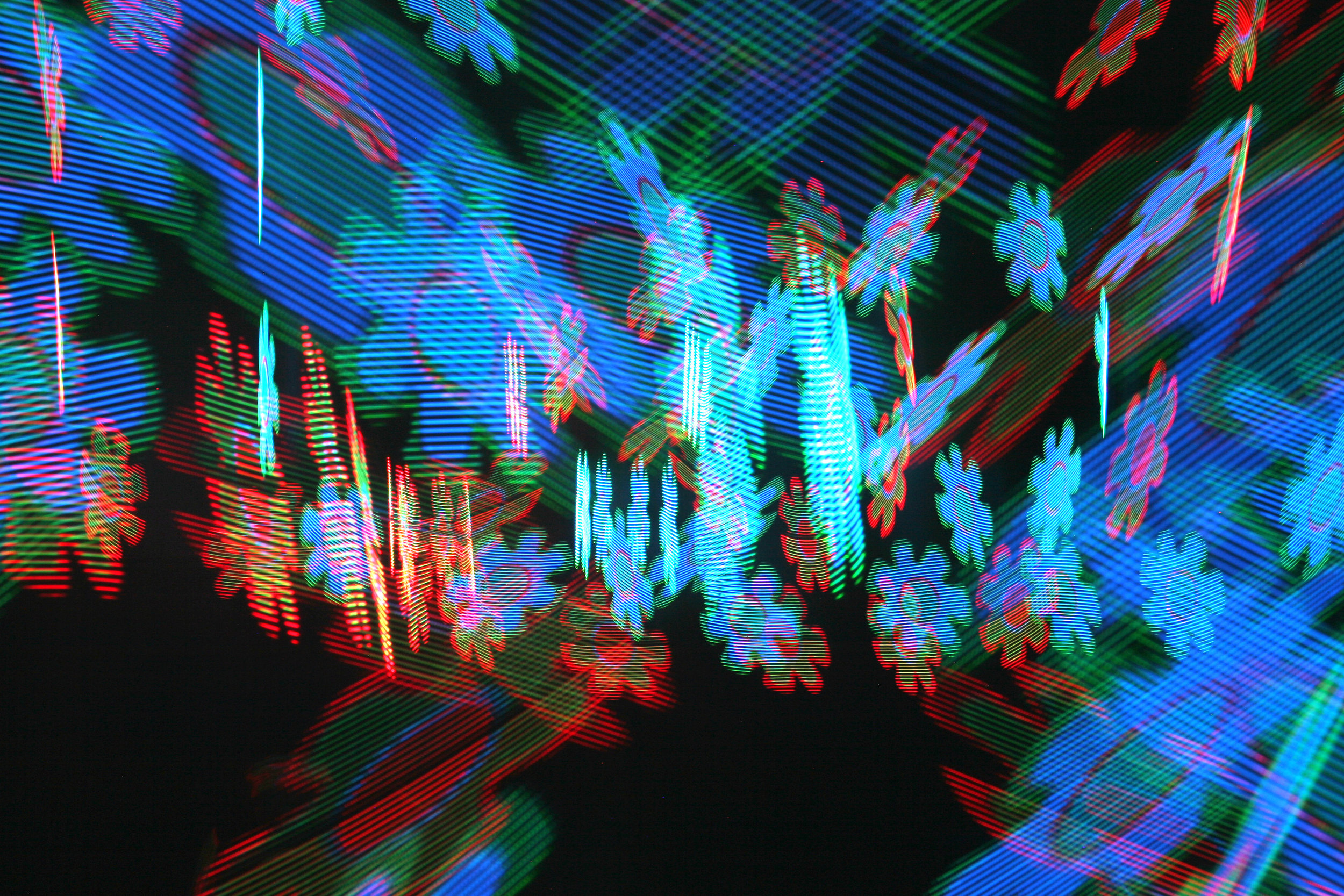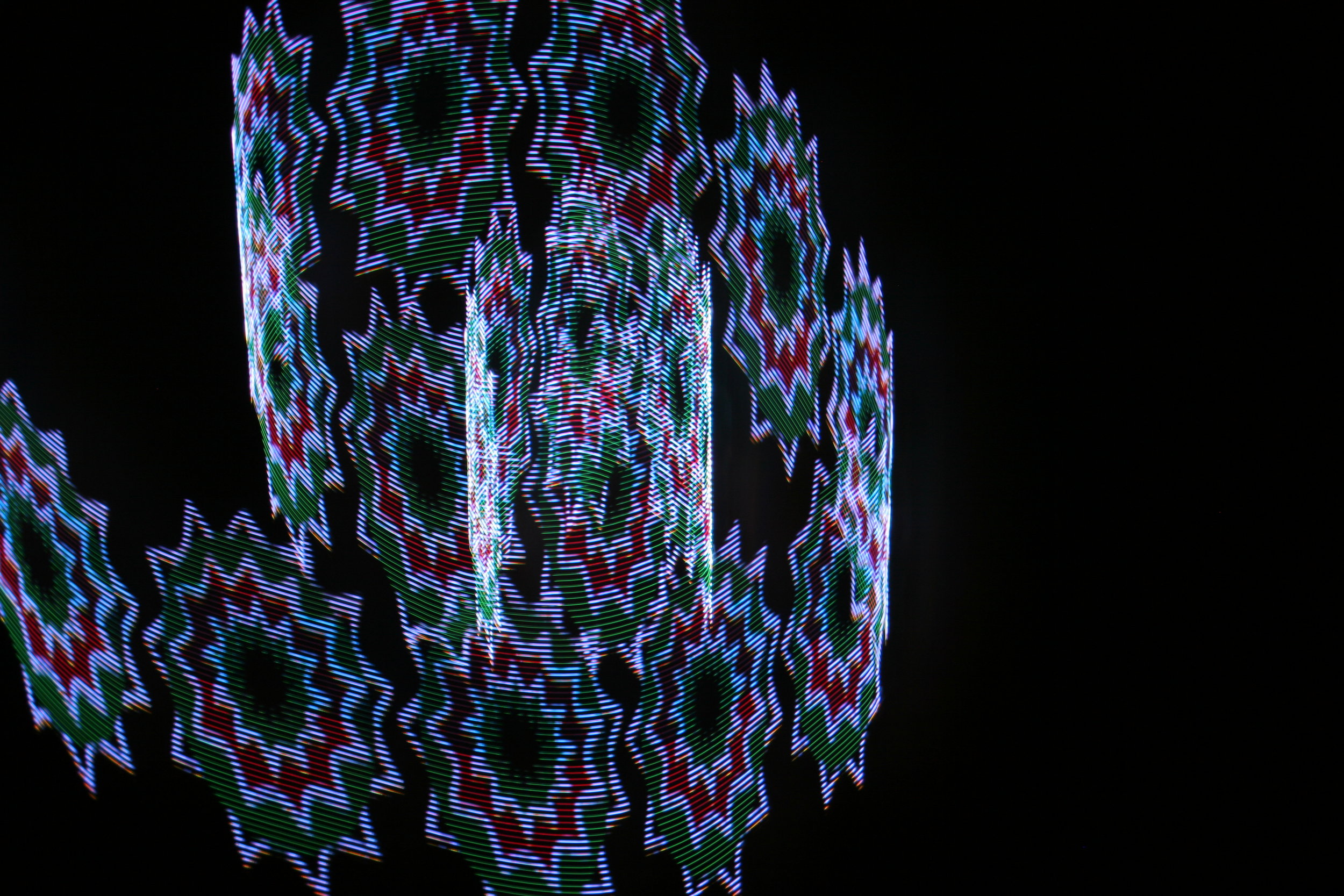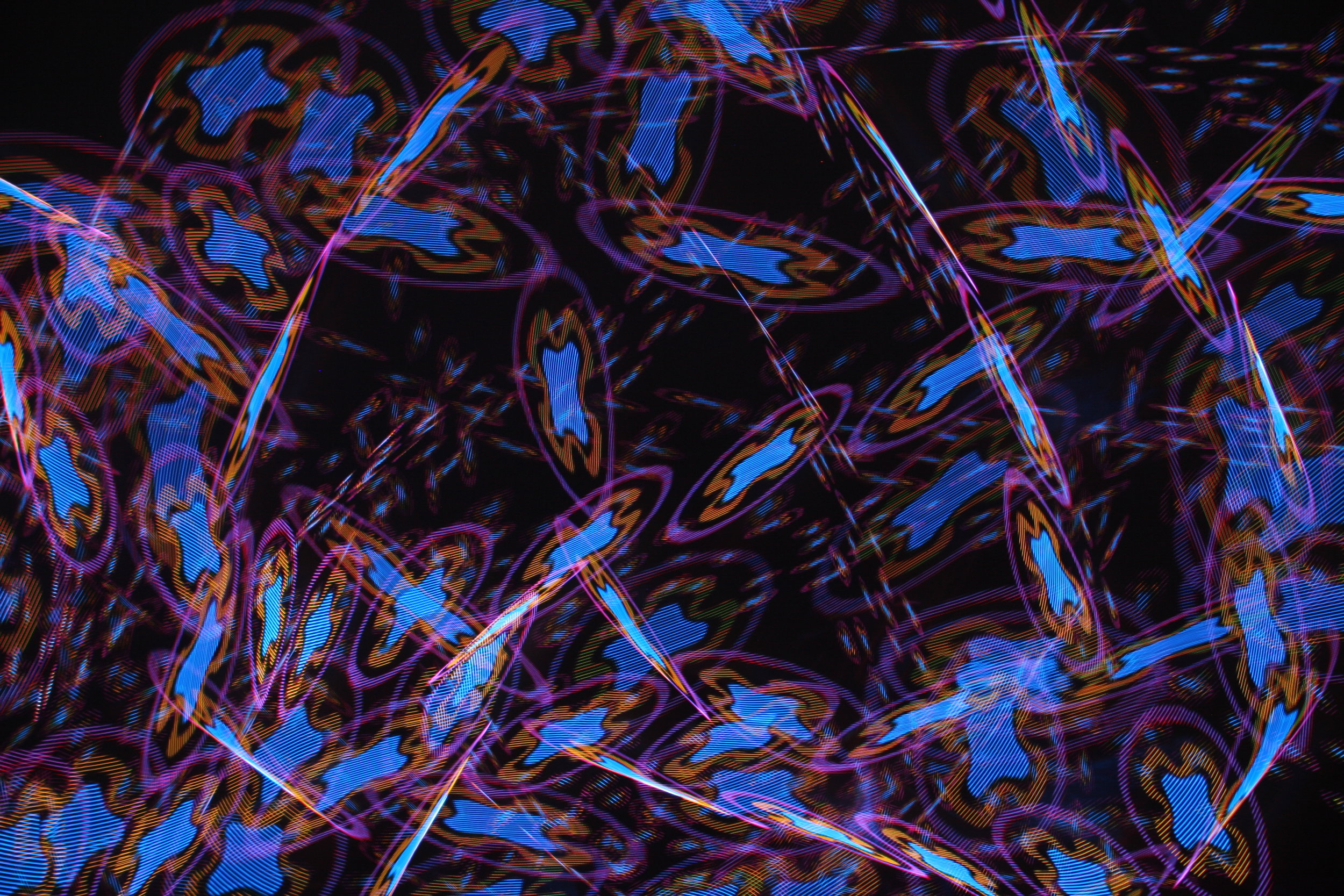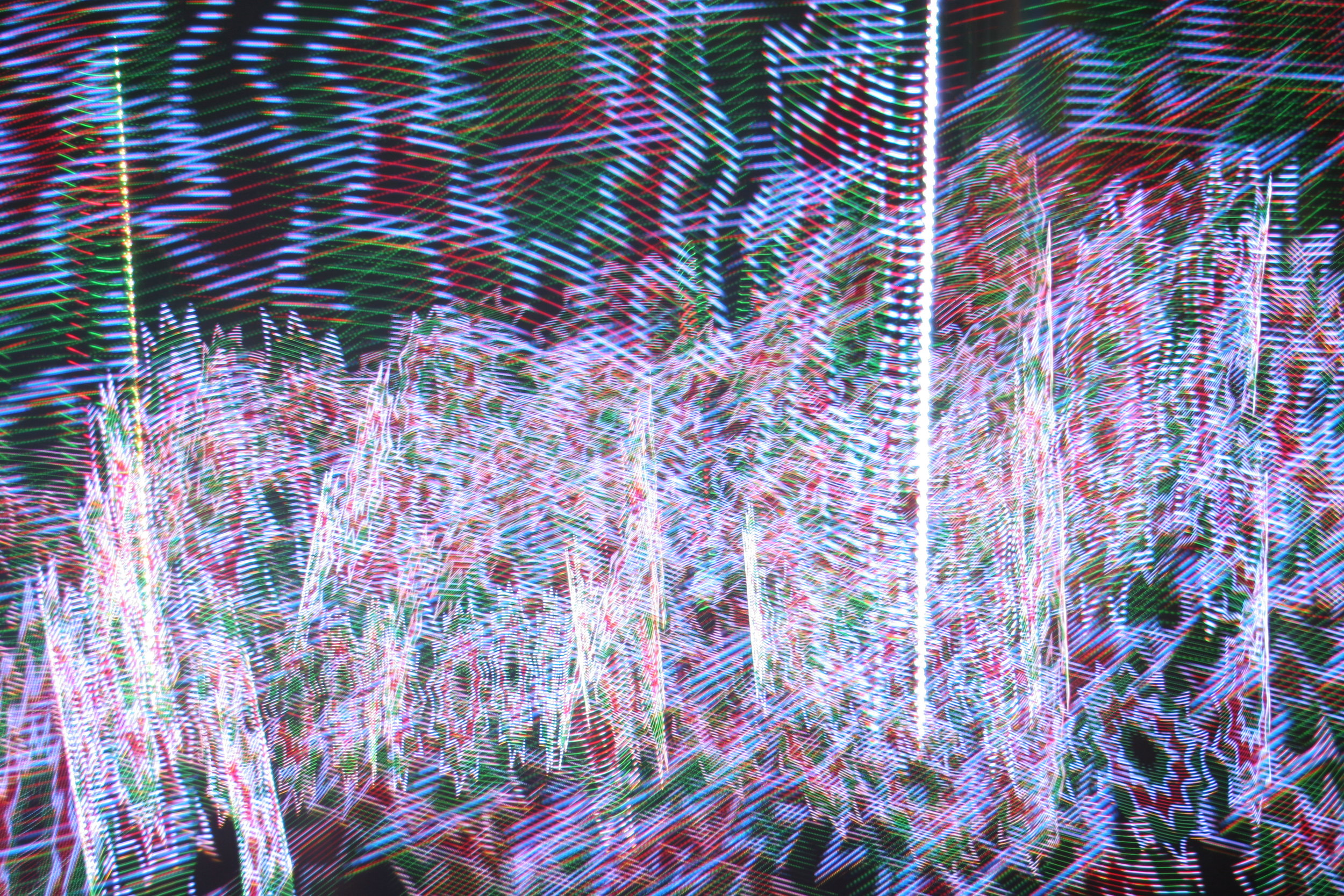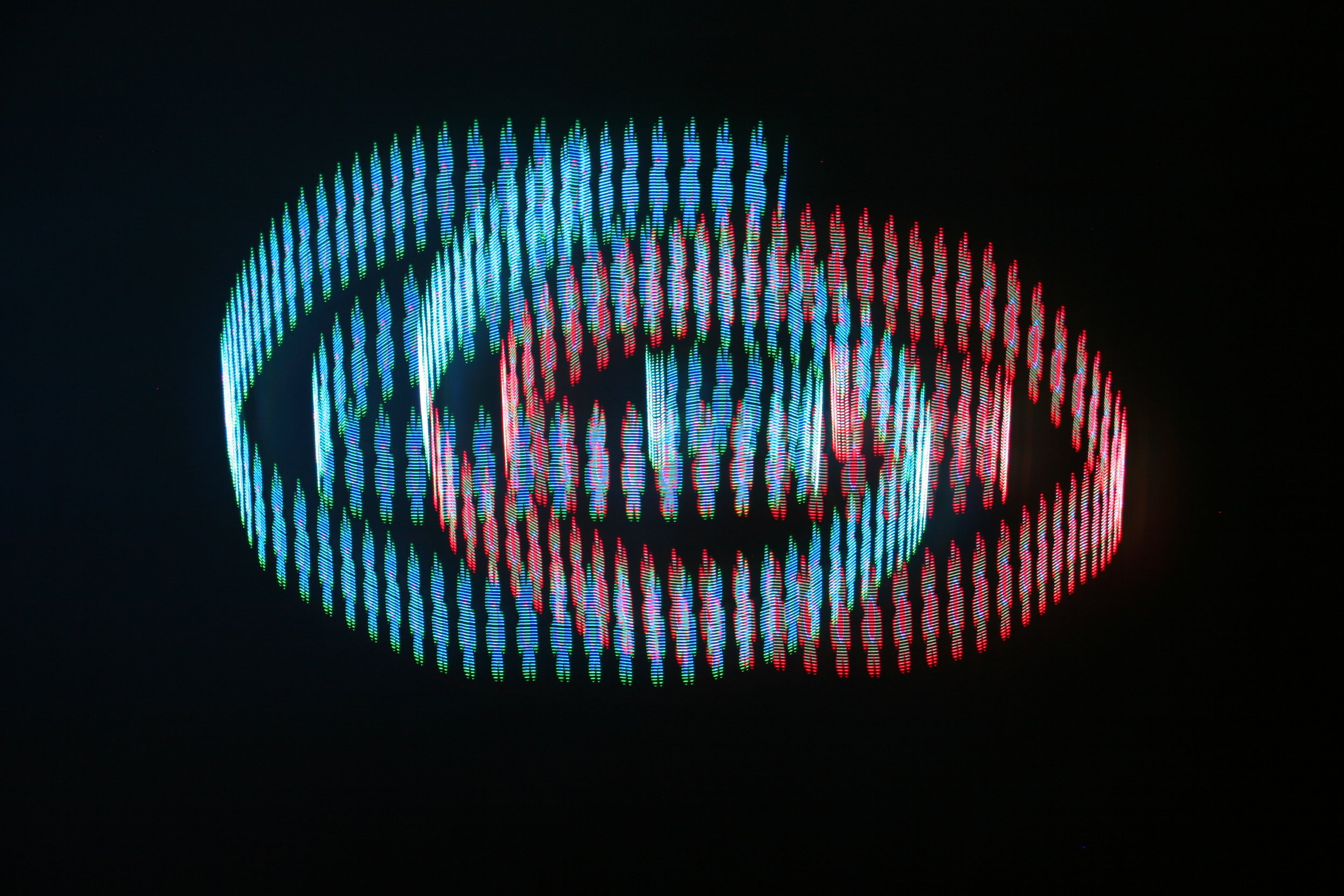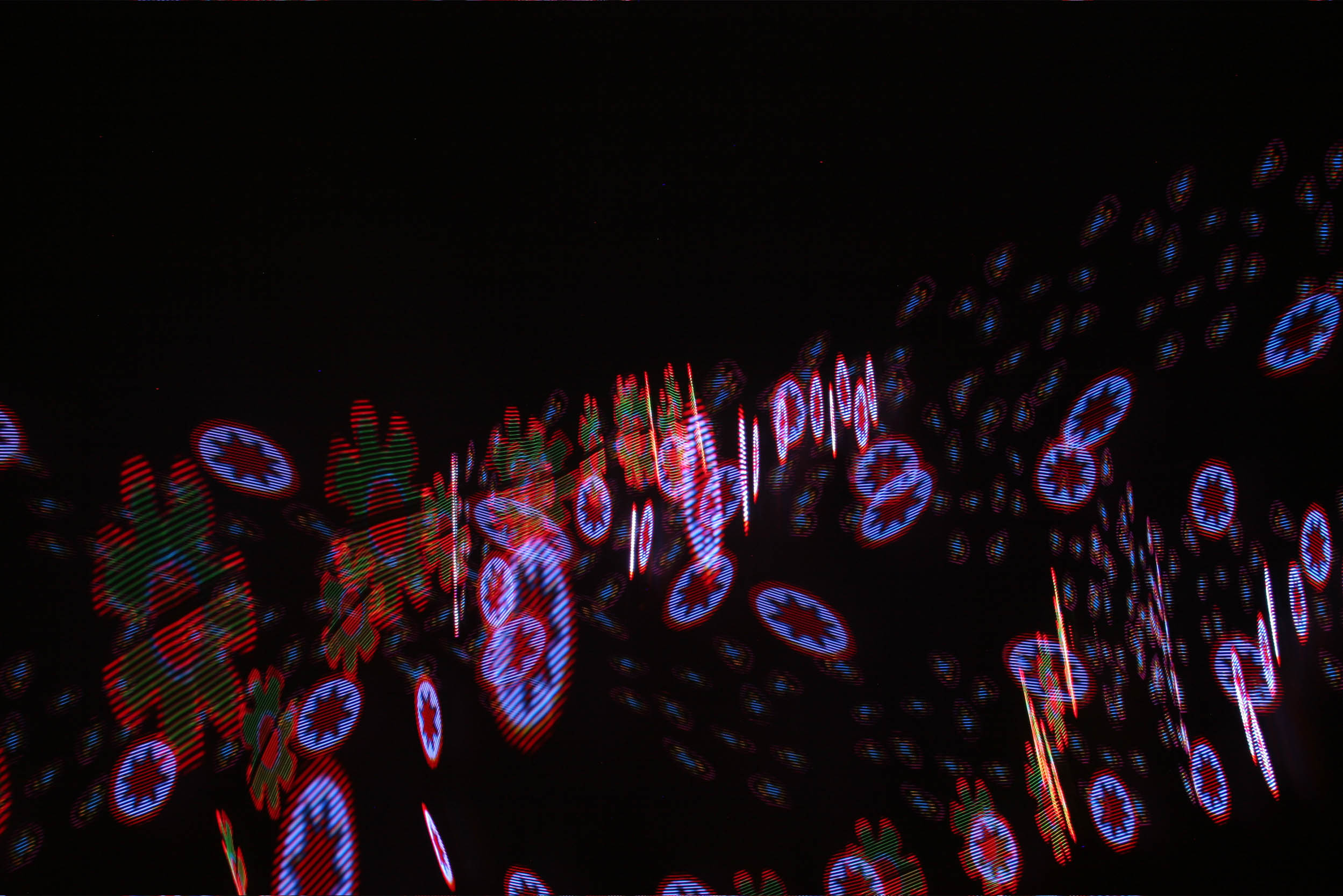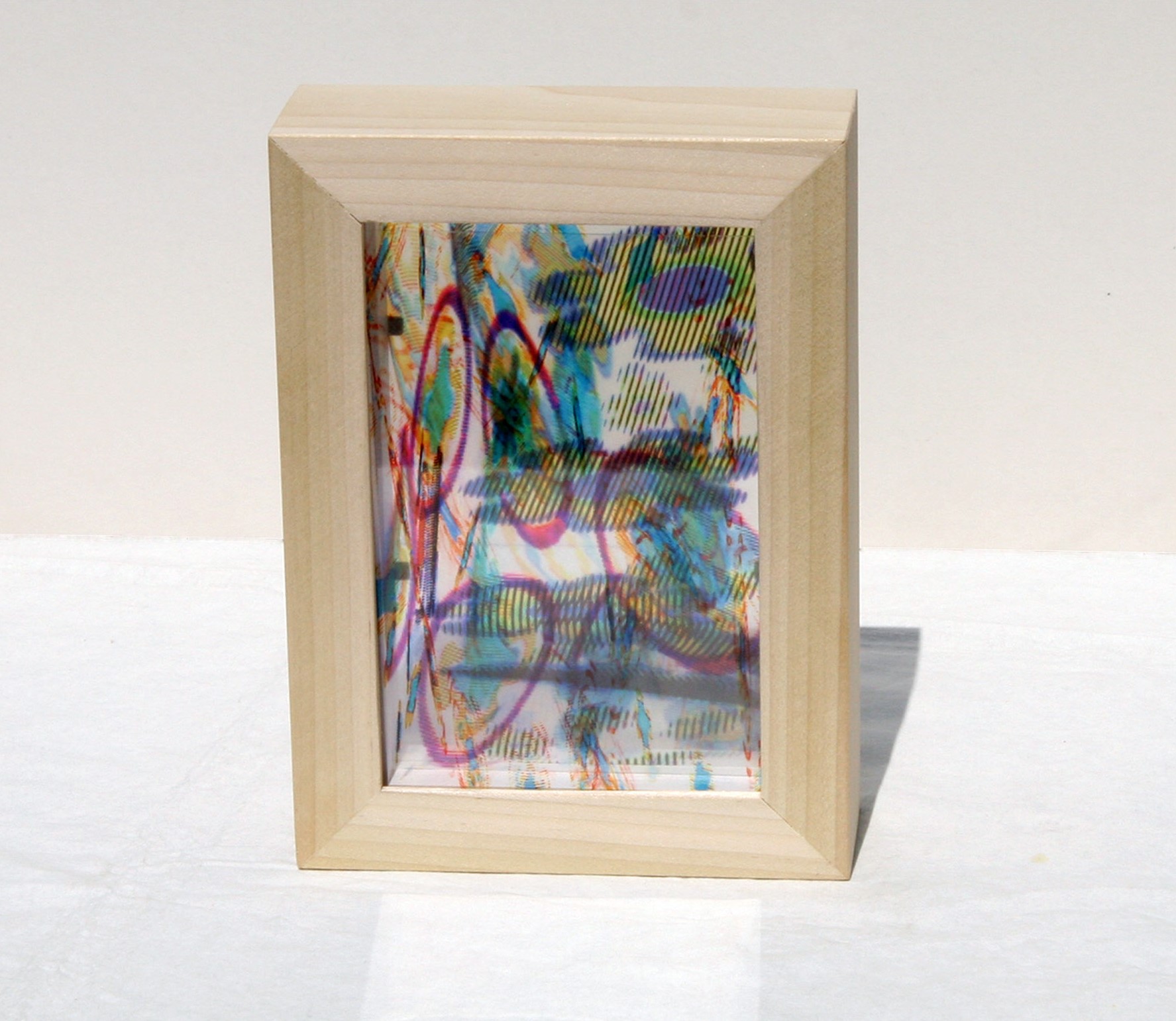Polyluminous Imaging
Polyluminous Imaging is a video sequence inspired by Saccade–based Display (an LED light display developed by Junji Watanabe and Hideyuki Ando). The videos are constructed using a set of photographs I made from the Saccade–based Display that projects images I created. By moving the camera during each exposure this simulates the effect of shifting the field of vision with a series of images captured with each shot. These are then edited in sequences to create the videos.
These video sequences were presented at the 28th Japan Psychonomic Society Conference in Tokyo, December 2009.
Saccade-based Display by: Junji Watanabe and Hideyuki Ando
The 28th Japan Psychonomic Society Conference, Tokyo, Japan - 9th December 2009
An illustrated booklet about the collaborative process with Junji Watanabe in the creation of Polyluminous Imaging was published for the conference.
Below: installation of Polyluminous Imaging (1 & 2); images produced by Saccade-based Display captured by hand-held camera (3 - 6).
Saccade-based Display
What is Saccade-based Display?
One dimensional LED light sources are flickering during eye movements. As eyes move, a two dimensional image is drawn on the retina. Although it seems to be a one dimentional light source during fixation, a 2D image is perceived when the eyes travel in front of the display.
In fact, you can capture the 2D images if you move a camera in front of the LED in the way that simulates the experience of looking by eye.
More on Polyluminous Imaging
Below: images captured photographically then developed into Polyluminous Imaging.
Shadow Box
A group of shadow boxes were derived from still images of Polyluminous Imaging. They were displayed in the exhibition ‘Intangible Spaces’ at Aisho Miura Arts, Tokyo, Japan in 2010.
Below: group of Shadow Boxes (1); Shadow Boxes (2 - 5); image from a Shadow Box projected on a surface








